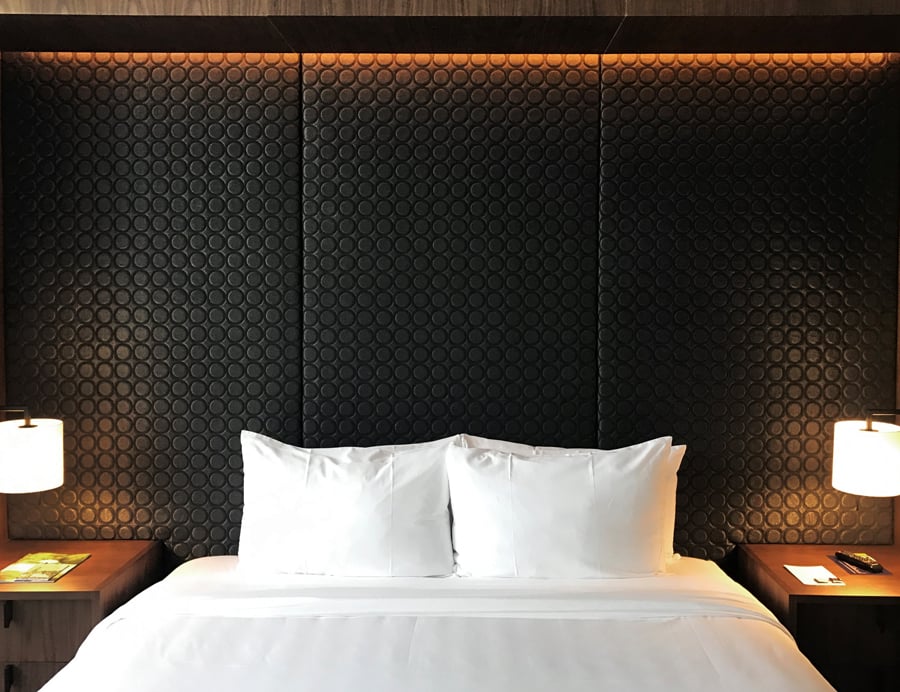
December 15, 2020
Xorel Continues to Delight and Inspire
Carnegie’s signature wallcovering began as an alternative to PVC. Four decades on, it has become much more.
Sponsored by:

educational, office, hospitality, and healthcare. Courtesy Carnegie
When Carnegie first released Xorel in 1981, the only choices architects had for interior wallcoverings in high-traffic areas were paint and PVC vinyl. Both had their limitations: Paint wears, chips, gets dirty, and ultimately requires regular repainting; PVC is a more durable option, but was visually limited at the time, and continues to have all kinds of negative environmental impacts. Xorel offered a revolutionary alternative. A woven material that was free of plasticizers and PVC, it was extremely durable and could stand up to harsh cleaners, while a unique woven texture and soft luster gave designers a more sophisticated look for interiors that see heavy use.
Heather Bush, chief creative officer at Carnegie, recalls the ripple effect Xorel had on the design world. “The more daring designers fell in love with it right away while those more skeptical came around over time,” she says.

A game changer in the industry, Xorel introduced the concept of high-performance textiles to the design world. Today, the material continues to push boundaries and open up new possibilities. Over the past four decades, Carnegie has continued to innovate, developing new applications and increasing the material’s sustainability credentials, and providing designers with an ever-increasing array of options.
“We have always upheld the original premise of the material since 1981—high performance and small environmental impact,” says Bush. Investment in research and third-party certifications have helped build a PVC alternative into a truly green wall surface. Xorel achieved Cradle to Cradle Silver Certification in 2007 and with the introduction of bio-based Xorel, which is made from sugar cane instead of fossil fuels, became the first wallcovering to achieve Gold Certification. Biobased Xorel is also certified under the Living Building Product Challenge, making it an ideal solution for designers pursuing a high level of sustainability.

While primarily a wallcovering and panel solution, Xorel’s durability and cleanability have made it attractive for designers looking for a high-performance offering suitable for other applications. In fact, Xorel has been successful within the hospitality sector, often being specified for headboards in guest rooms and moveable walls for hotel event spaces. With the introduction of Xorel Knit last year, the same qualities that set it apart as a surface are available for upholstery that can handle the complex curves of softer furnishings such as chairs and sofas. Carnegie also identified the acoustic surfaces market as another point for expansion, introducing Xorel Artform, a wall panel solution, in 2016. Today, they offer ceiling panels and baffles as well. Since the woven fabric is acoustically transparent, it can also be used to cover any suitable acoustic material. Overall, Xorel delivers acoustical performance, stability on a panel, and ease of maintenance and cleaning.

With so many ways to use Xorel, it’s no wonder that it’s a favorite of architects and designers, many of whom have come to see Xorel as a material finish rather than a textile product and specify it over and over again in different applications and aesthetic schemes. For Bush, the material’s staying power is due to its balance of beauty and durability, innovation and versatility. “Clients want materials that not only look great but also solve problems for them on their projects. This was the initial premise behind Xorel 40 years ago, and that spirit still imbues everything the Carnegie design team does today in furthering its development,” she says.















